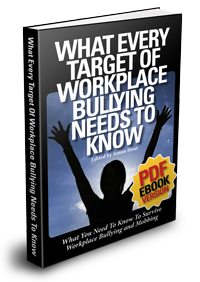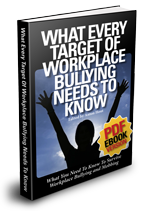Teenage Suicide Prevention Through Bullying Prevention And Bully-Proofing
Is teenage suicide prevention supported by preventing bullying behavior or lowering the impact bullies have on targets in the first place? Teenage suicide is an unfortunate reality in our world, one that is often connected to bullying in school or other social settings. Especially in this increasingly digital age, the ability of young people to reach out and affect each other in both positive and negative ways is greatly increased. This takes bullying to a whole new level and, sadly, has taken the response to bullying to more drastic lengths as well.
While coverage in the media has brought an increased awareness of the problem of suicide, it tends to focus on the more sensationalized aspects of the subject rather than the basic facts. When it comes to teenage suicide prevention it is vital that we look past the surface and come to a better understanding of the various factors that lead teens to suicidal thoughts and actions. The more we can do this, the more effective prevention methods will be.
Unfortunately, bullying has been a part of growing up for many children. It can start as early as grammar school but it tends to take on even more power during the teenage years, when children are already facing physical and emotional changes and the social pressure that comes with them. When you add bullying into that already volatile mix, then teenage suicide often becomes a common denominator.
It is certainly not hard to imagine that teens who are regularly subjected to taunting, harassment and even physical abuse, may begin to exhibit the symptoms of trauma. They may feel trapped and helpless, fearful of going to school, unable to cope and eventually begin to think that their only solution is suicide.

Al Troin / stock.adobe.com

Al Troin / stock.adobe.com
The goal of teenage suicide prevention is to intercede before they reach that level and help them to understand that there are healthier ways of dealing with the situation. Bully-proofing your child emotionally is more important even than preventing bullying. Bullying will always exist, even after they are out of school and in the workforce. Bully-proofing skills will serve them for life.
Teenage Suicide Prevention By Bully Reduction
Interestingly enough, what many people tend to overlook in situations like these is that the person doing the bullying may be exhibiting just as loud of a cry for help as their victim. Often, bullies are also the victims of bullying or of some other kind of traumatic experience in their home life. Instead of seeking help, they instead turn the situation around and begin to take on the role of the aggressor themselves. Often, they too exhibit a tendency toward teenage suicide.
Again, the sensationalized focus of the media can come into play, as they paint the bullies as horrific bad guys and call for retribution, when in reality they may need teenage suicide prevention themselves. It is important to look at the situation from all sides and ensure that any and all emotional trauma is being properly addressed before conditions reach a critical level.
Adults must step in and do everything they can to effectively prevent teenage suicide. The much-used adage "it takes a village" is actually quite true in situations such as this. No one should have to feel so traumatized by bullying that they see no other solution but to end their life. Nor should anyone be so torn by circumstances in their lives that they turn to destructive behavior like bullying. How much would suicide prevention improve by reducing both bullying and the effect of bullying on targets?
There is nothing more tragic than seeing a young life ended before it has truly begun and so we all need to come together to work on teenage suicide prevention. This way no parent, friend or teacher will ever have to suffer the pain of losing a teen and no teen will have to feel so crushed by a bullying situation that they have no other escape. The time to act, for all concerned, is now, before it’s too late.
More information about teen suicide prevention from the American Psychological Association.
National Suicide Prevention Lifeline










